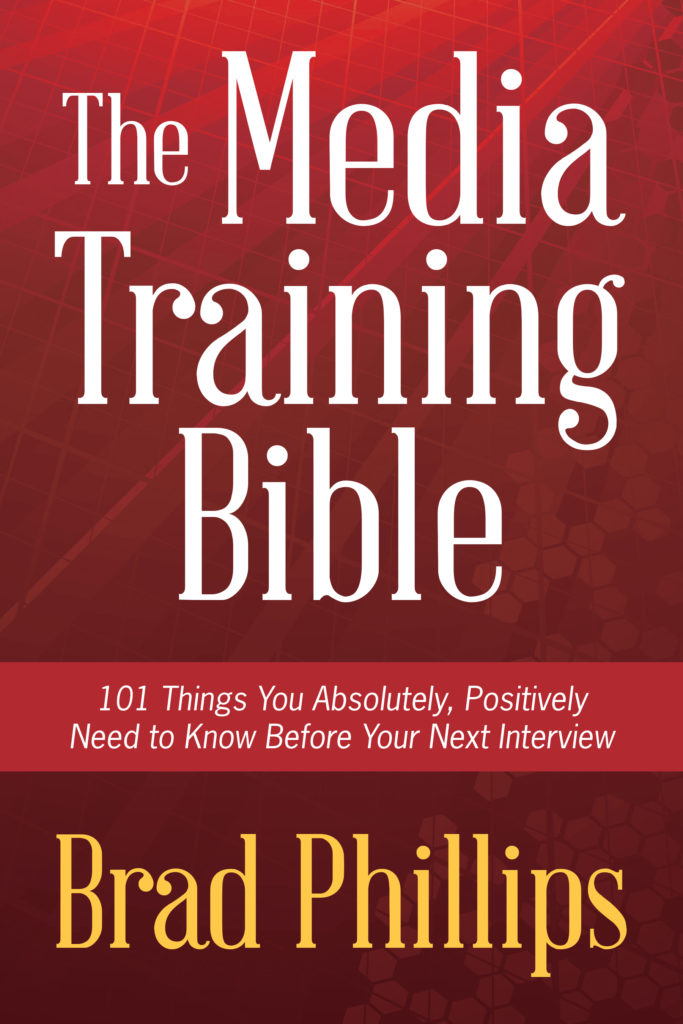How To Gesture During Media Interviews
This is an excerpt from The Media Training Bible, available in soft cover, for Kindle, and iPad.
Many people tell me they were instructed by a previous media trainer never to gesture when they speak. A few were even taught—often by grade school teachers—that gesturing is rude.
That’s terrible guidance. Your goal during a media interview is to appear as natural on camera as you are in person, and almost everyone gestures naturally when they speak. Sure, a small percentage of people gesture too much, but that’s a rare problem.
According to body language experts Allan and Barbara Pease, “Using hand gestures grabs attention, increases the impact of communication, and helps individuals retain more of the information they are hearing.”

In other words, gesturing not only helps you look more natural but also enhances the impact of your words.
We see that regularly in our media training sessions. When we encourage trainees to incorporate gestures into their delivery, something amazing happens: their words get better. The physical act of gesturing helps them form clearer thoughts and speak in tighter sentences.
To gesture effectively, keep your hands “unlocked” at all times—no clasped hands, hands behind your back, hands in pockets, or arms crossed in front of you. Those “closed” positions can communicate arrogance or defensiveness, and they lower the audience’s ability to absorb and retain your information.
For seated interviews, keep your hands and arms unlocked and ready to gesture at any moment. When not gesturing, you can:
- Keep your hands on your lap near your knees.
- Nest your hands loosely within one another atop your lap.
Avoid clasping your hands or gripping your thighs, which can make you appear nervous (men should also be careful to steer clear of the defensive “hand covering groin” position).

Avoid all closed body language, such as crossed arms.
For standing interviews, you have two good options:
- Loosely nest your hands, one within the other, keeping them at navel level when not gesturing.
- Rest your hands at your side, bringing them up to gesture (it feels strange, but looks fine to the audience).
If you’re having a tough time gesturing naturally, speak about 10—15 percent louder than usual. As parents know all too well, it’s impossible to yell at your kids while your hands and arms are frozen—an increase in volume helps to reanimate motionless hands.
Finally, some people wonder if they should still gesture if the television program on which they’re appearing will only use a tight shot of their face, neck, and shoulders. Absolutely. Viewers can always tell if a spokesperson is gesturing—even if they can’t see the movements—because the spokesperson’s face is more expressive as a result.
This is an excerpt from The Media Training Bible: 101 Things You Absolutely, Positively Need to Know Before Your Next Interview, available in paperback, for Kindle, and iPad. Don’t miss a thing! Click here to instantly join our mailing list and receive the best of the blog twice each month.
